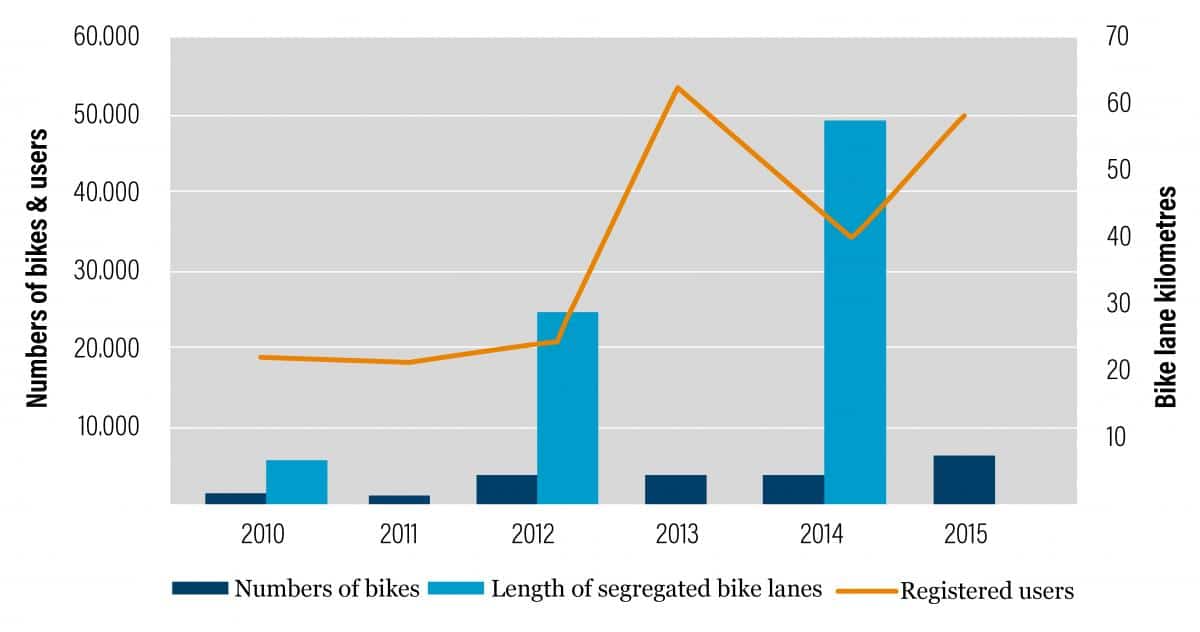Increasing the number of cyclists
Mexico City’s commitment to expanding and improving cycling infrastructure together with promoting cycling for residents, has caused an increase in the number of cyclists over time.
The graph below illustrates the total number of registered EcoBici users each year from 2010 to 2015. While city-wide cyclist data is not available, this graph indicates overall growth in cyclists over time.

2010-2012: Following the launch of EcoBici and as Mexico City began to expand the network of bike lanes, we see a gradual increase in bicycle users.
2012: A landmark year. The number of bikes in the bike share program almost tripled, while the length of bike lanes was increased to almost five times, compared to 2010.
2013: As a result of the previous year’s actions, there was a 14 percent increase in the number of registered EcoBici users.
The expansion of cycling facilities stimulates uptake – a conclusion that follows the general principle of transport supply and demand, which has long been established in relation to road networks.